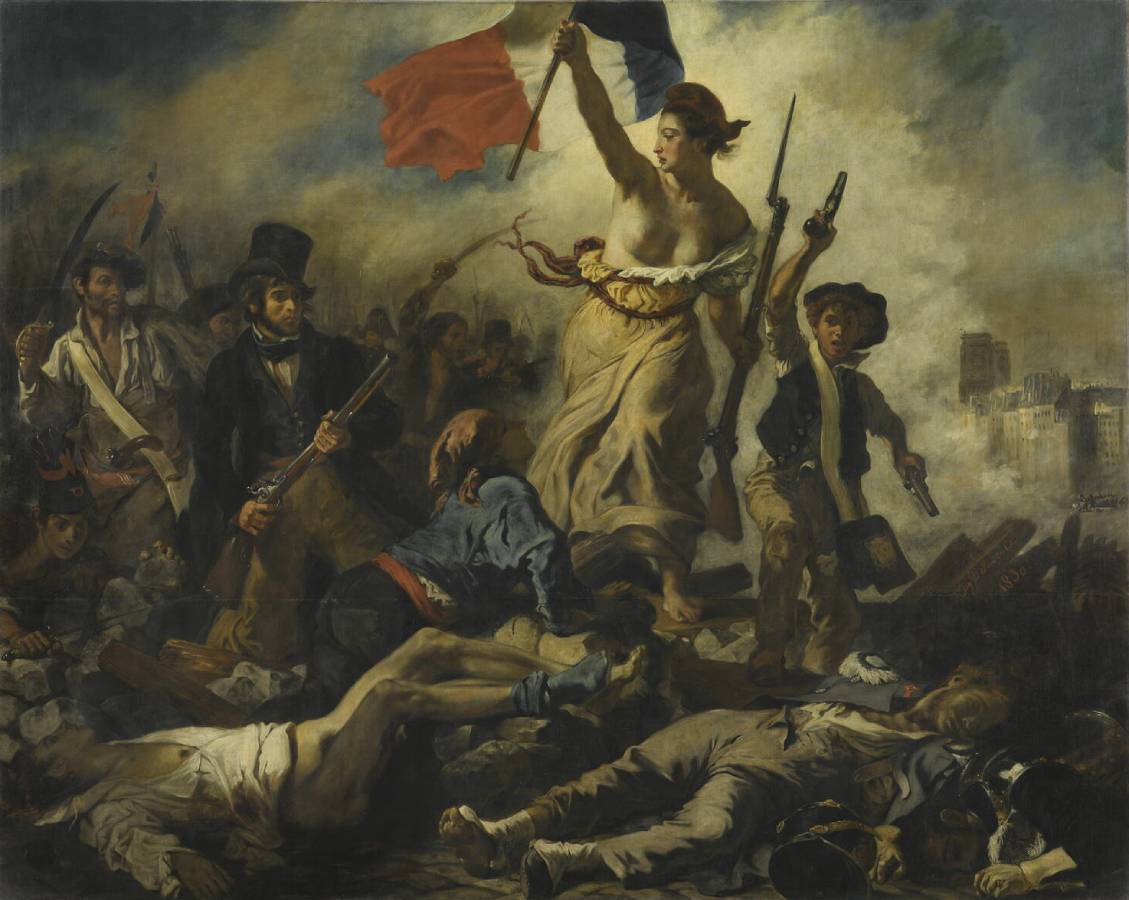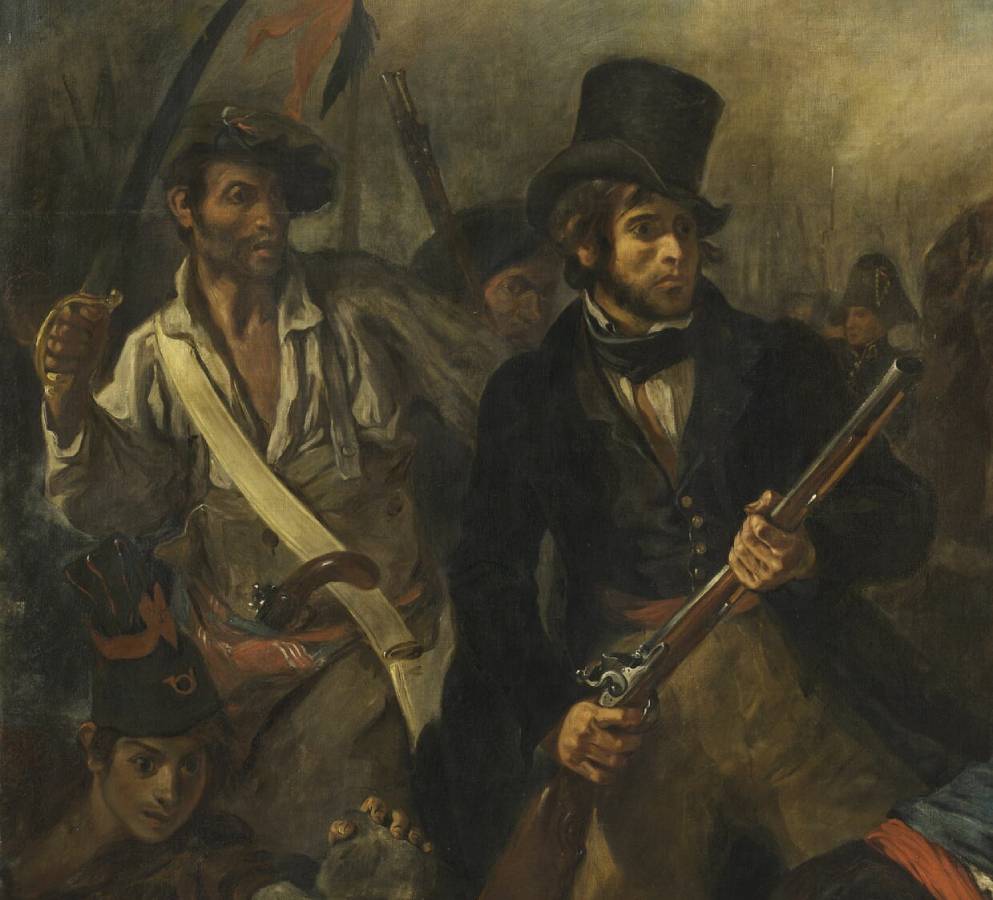Delacroix, Eugène (1798-1863)
La Liberté guidant le peuple. Le 28 juillet 1830 (Liberty Leading the People. July 28, 1830)
1830
Oil on canvas, 260 x 325 cm
Musée du Louvre, Paris
Other title: Une Barricade (A Barricade)
Inscription: “Eug. Delacroix.1830” (in red oil, right halfway up)
Painted from September to December 1830 in the studio rented by Eugène Delacroix at 15 (current n°17?) quai Voltaire, Paris; envisaged for the second exhibition for the benefit of the wounded in July 1830, gallery of the Chambre des Peers (Palais du Luxembourg), Paris, January 1831 (no. 508 of the booklet under the title “Une Barricade”), in reality not loaned; admitted by the Salon jury on April 13, 1831; exhibited at the Salon (open from May 1 to August 15, 1831), Paris, Royal Museum (Louvre), no. 511 of the booklet under the title “July 28. Liberty guiding the people” (no. 1380 of the entry register works, under the title “Liberty leading the people on July 29” and with dimensions of “293 x 358 cm” including frame); envisaged as a purchase of the Civil List of King Louis-Philippe I, in July 1831, at the price of 2,000 francs, finally purchased by the Ministry of Commerce and Public Works in August 1831, at the price of 3,000 francs (replacing the order for 3,000 francs for a painting on the subject “King Louis-Philippe I visiting the cottage where he stayed near Valmy, June 8, 1831“, canceled following Delacroix‘s withdrawal); therefore not registered in the register of acquisitions of the Civil List during the reign of Louis-Philippe I and remained without an inventory number until 1875; presented at the Luxembourg Museum, Paris, in 1832 and 1833 (supplement to the catalog, no. 160); placed in reserve around 1833–1834; entrusted to the artist around 1839 who placed it in storage at the home of his aunt Félicité Riesener and his cousin Léon Riesener, Frépillon (Val-d’Oise); requested from the artist by the Ministry of the Interior in March 1848 (Delacroix requested on this occasion an increase in the price of 7,000 francs, for a total of 10,000 francs; this increase was refused); loaned by Delacroix to the Lyon painter and entrepreneur Alphonse Jame between May 1848 and March 1849, with a view to being exhibited in Lyon, for 1000 francs (paid in two installments of 500 francs, on September 11, 1849 and March 8, 1850); returned to Paris and placed in reserve in the stores of the Louvre Museum, around March 10, 1849; presented at the Musée du Luxembourg, Paris, from June 1849 until 1850 (absent from the printed catalog); stored in the stores of the Louvre Museum from 1850 to 1855; not inventoried by the curator Frédéric Villot between 1852 and 1860; exhibited at the Universal Exhibition, Palais des Beaux-Arts, Paris, 1855, no. 2926; put back in reserve in the stores of the Imperial Museums from 1856 to 1863; presented at the Luxembourg Museum, Paris, from 1863 to 1874; sent to the Louvre Museum, November 1874; inventoried “R.F. 129” in 1875; kept safe at the depot of the Château de Sourches, Saint-Symphorien (Sarthe), from 1939 to 1945; returned to the Louvre Museum, Paris, June 16, 1945; restored by Raymond Lepage and Paul Maridat (recovering at 35,490 francs) and by Georges Zezzos (cleaning and reintegration of the pictorial layer), summer 1949; presented in the Mollien room from October 1949 to 1969, then in the Daru room from June 1969 to June 1994, then in the Mollien room since December 1995; restored by David Cueco and Claire Bergeaud (replacement of the frame, installation of tension bands on the edges of the canvas and repair of the edging paper) in January-February 1999. (Louvre)
Detail: Delacroix‘s self-portrait as ‘garde national’.
See also:
• Trois Glorieuses (French Revolution of 1830)

